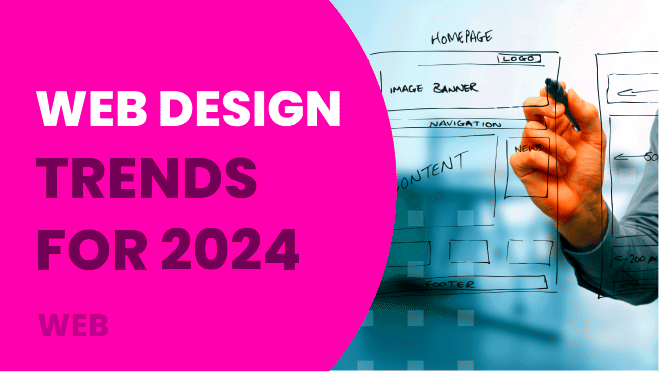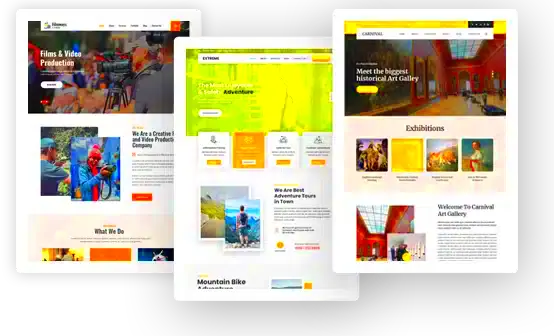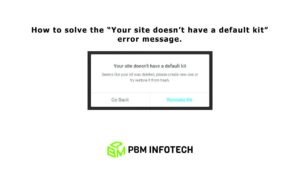As we step into 2024, it’s an exciting time for website design, especially on WordPress. Every year, we see new trends that not only enhance visual appeal but also improve user experience. Staying updated with these trends is vital for businesses and individuals looking to make a strong online presence. From minimalist aesthetics to immersive multimedia, let’s dive into what’s shaping the WordPress design landscape this year.
Minimalist Design: Less is More

One of the standout trends for 2024 is undoubtedly minimalist design. This approach emphasizes simplicity, focusing on essential elements while eliminating the clutter. But why is minimalist design gaining traction? Here are some reasons:
- Improved User Experience: A clean layout directs users’ attention to key content, enhancing navigation and usability.
- Faster Load Times: Fewer graphics and heavy elements mean quicker loading, which is crucial for retaining visitors.
- Timeless Aesthetic: Minimalism tends to age well. It fosters elegance and sophistication, making websites look fresh longer.
When implementing a minimalist design, consider these essential aspects:
| Feature | Description |
|---|---|
| Whitespace | Using space effectively to separate elements creates a clean and organized look. |
| Color Palette | Opt for a limited color scheme to maintain consistency and provide a serene browsing experience. |
| Typography | Selecting simple, easy-to-read fonts helps in retaining viewers’ attention on the content. |
By embracing the minimalist design trend, you can create a WordPress website that not only looks stunning but also functions seamlessly. It’s a powerful way to let your content take the spotlight, showcasing what truly matters to your audience.
Dark Mode: A Trend that Stays

Have you noticed how dark mode has taken the digital world by storm? It’s not just a passing fad; it’s becoming a staple in web design, especially for WordPress sites. As we move into 2024, dark mode continues to shine brightly for several reasons that transcend mere aesthetics.
One major advantage of dark mode is its eye-friendly nature. Designers and users alike appreciate how darker layouts reduce eye strain, especially in low-light environments. For many, scrolling through a site at night or in dim conditions has become much more comfortable with a dark background. This consideration for user experience is something that’s increasingly influencing website design.
Not only does dark mode help in reducing glare, but it also enhances visual hierarchy. Elements like buttons and images can stand out more dramatically against a dark backdrop, creating an impactful presentation. When users land on a page with a well-executed dark mode, they often feel a sense of immersion, drawing them further into the content.
Here are a few key reasons why dark mode is here to stay:
- Increased Focus: Dark mode minimizes distractions, allowing users to concentrate on important content.
- Battery Saving: For mobile users, dark mode conserves battery life, particularly on OLED screens.
- Modern Aesthetic: Dark themes often convey a sleek, modern vibe, appealing to contemporary design sensibilities.
As we forge ahead, expect dark mode to remain a powerful ally for WordPress developers aiming to craft visually striking and user-friendly websites.
Bold Typography: Making a Statement
In 2024, one design trend that refuses to be silenced is bold typography. This isn’t just about fancy fonts; it’s about making a genuine statement with text that demands attention. If you’ve ever scrolled through a website and felt captivated by striking headlines or fonts, you know the power of effective typography.
Bold typography is the perfect tool for designers looking to convey a message or brand identity with clarity. It helps in organizing content and can even guide a user’s journey through a site. Think about it: when you see a large, bold headline, it naturally draws your eyes and encourages you to read further. It’s like a friendly nudge saying, “Hey! Look at this!”
Here are some ways bold typography is reshaping WordPress design in 2024:
- Establishing Hierarchy: Bold fonts can establish clear visual hierarchies, making it easy for users to navigate through headings and subheadings.
- Brand Personality: The right bold font speaks volumes about a brand’s character, whether it’s playful, serious, contemporary, or classic.
- Enhanced Readability: Large, bold text can improve readability, especially on mobile devices, making content more accessible to users.
In a world flooded with digital content, a well-thought-out use of bold typography can help a website stand out in the noise. As we dive into 2024, expect designers to push the boundaries even further, experimenting with font weights, styles, and sizes to create dynamic visual experiences. Whether you’re a developer or a business owner, embracing bold typography can be a game-changer for your WordPress website.
Interactive and Immersive Experiences
As we move into 2024, one of the standout trends in WordPress website design is the shift towards interactive and immersive experiences. This isn’t just about making websites visually appealing; it’s about creating engaging environments that captivate visitors and encourage them to explore further.
Gone are the days of static pages that merely convey information. Today’s users crave interaction and engagement, which can be achieved through various elements, such as:
- Animations: Subtle animations can help guide a user’s attention to important areas on the page, making navigation feel intuitive.
- Microinteractions: These small, subtle interactions—like hover effects or feedback from a button click—add a layer of responsiveness that enhances user satisfaction.
- Dynamic Content: Displaying content that changes based on user interaction can personalize the experience significantly. Think quizzes, polls, or even product suggestions that adapt as users engage.
- Virtual and Augmented Reality: While still emerging, incorporating VR or AR elements could revolutionize how users interact with products or services directly from your website.
These elements not only make websites more fun to navigate but also significantly increase the amount of time users spend on the site. In a world where attention spans are short, crafting an engaging experience can help you stand out from the competition.
Responsive and Mobile-First Design
It’s no secret that mobile devices dominate internet usage today. As we head into 2024, the emphasis on responsive and mobile-first design has never been more critical. If your website doesn’t look good on a phone, you’re likely losing potential customers.
Responsive design ensures that your website adapts seamlessly across various screen sizes—from large desktop monitors to small smartphones. Here are some key principles to consider:
- Fluid Grids: Instead of fixed layouts, fluid grids allow your design elements to resize according to the screen’s dimensions, providing a consistent experience.
- Responsive Images: Using images that adjust in size prevents them from appearing distorted or pixelated on smaller screens.
- Touch-Friendly Elements: Buttons should be large enough to be tapped easily on mobile devices, ensuring users can navigate without frustration.
- Fast Loading Times: Mobile users often have less patience, so optimizing images, minimizing heavy scripts, and using caching can enhance load speeds and keep users engaged.
By adopting a mobile-first approach, you can not only improve your site’s SEO but also foster better user experiences. With Google prioritizing mobile-friendly sites in its rankings, there’s truly no excuse for neglecting this aspect of your online presence.
7. AI-Powered Personalization
In the rapidly evolving digital landscape, AI-powered personalization is making waves, and it’s a trend that’s expected to soar in 2024. Imagine a website that adapts to every visitor’s behavior and preferences in real-time. Sounds futuristic? Well, it’s already happening! Websites designed with AI can analyze user data and offer personalized experiences tailored to individual tastes. This not only enhances user engagement but also positively impacts conversion rates.
So, what does this mean for your WordPress website? Here are some key features of AI-powered personalization:
- Dynamic Content: AI can alter page contents based on user interactions, ensuring visitors see what’s most relevant to them.
- Recommendation Engines: Ever noticed those “recommended for you” sections? AI algorithms analyze previous behaviors to suggest products, articles, or services.
- Predictive Analysis: By studying previous interactions, AI can predict future behaviors and adjust the web experience accordingly.
- Chatbots for Support: Utilizing AI-driven chatbots can provide immediate assistance and personalized guidance to users.
Incorporating AI technologies into your website isn’t just cool; it significantly improves user satisfaction. As we approach 2024, expect to see more websites harnessing the power of artificial intelligence to create a one-on-one connection with their audience, making your WordPress site more relevant and engaging than ever before.
8. Sustainability in Web Design
As we become more aware of our planet’s challenges, the concept of sustainability in web design is actively gaining traction. Businesses and consumers alike are becoming more environmentally conscious, and your website can reflect that ethos in 2024. Sustainable web design not only focuses on aesthetic factors but also considers the broader impact on the environment.
Understanding sustainability means looking at various factors that contribute to a greener web experience. Here are some important aspects of sustainable web design:
| Aspect | Description |
|---|---|
| Energy-efficient Hosting: | Choosing green web hosting services that use renewable energy sources reduces carbon footprints. |
| Minimalist Design: | Opting for a simpler design can result in faster loading times and lower resource consumption. |
| Accessible Design: | Designing for accessibility not only helps users with disabilities but also enhances usability for everyone, promoting a broader reach. |
| Content Optimization: | Efficient images and videos reduce file sizes, making pages load faster and consume less energy. |
By incorporating these sustainability practices into your WordPress design, you not only contribute to a healthy planet but also attract eco-conscious consumers. As we delve deeper into 2024, the sustainability movement will continually shape how websites are created, ensuring a greener and more responsible Internet for all. So, whether you’re redesigning your existing site or creating a new one, keep sustainability top of mind!
Micro Animations: Enhancing User Engagement
Micro animations are all about those delightful little movements that can make your website truly pop! They’re not just pretty to look at; they serve a purpose. These tiny, often subtle animations can guide users, provide feedback, or even just add a touch of fun to their experience. In the fast-paced digital world of 2024, micro animations are becoming increasingly significant in web design—and for good reason!
Think of micro animations as the friendly cues that lead your visitors through your website. For instance, when someone hovers over a button and it slightly enlarges or changes color, that’s a micro animation in action. These animations can make your website feel more responsive and engaging, allowing users to interact more comfortably.
Here are a few ways micro animations can enhance user engagement:
- Visual Feedback: When users perform an action, like clicking a button, a subtle animation can confirm their action—such as a button pressing down or a loading spinner appearing. This keeps users informed and reassured.
- Storytelling: Micro animations can help narrate your brand’s story or guide users through complex processes. A smoothly transitioning infographic, for instance, can make information digestible.
- Highlighting Important Elements: Use animations to draw attention to critical call-to-action buttons or promotional content. This can effectively lead users to take the next desired step.
To sum it up, micro animations are like the secret sauce of web design in 2024. When used thoughtfully, they can captivate your audience and enrich their overall browsing journey—making them more likely to stay on your site longer!
Enhanced Accessibility Standards
In 2024, creating a website that everyone can easily use is not just a nice-to-have; it’s essential. With the growing emphasis on inclusivity, enhanced accessibility standards are shaping how WordPress designs are crafted. These standards ensure that individuals of all abilities can navigate, interact with, and benefit from your site effortlessly.
Accessible design is all about offering an equal experience to every visitor. This includes adopting practices like descriptive alt text for images, proper heading structures, and color contrast that meets industry guidelines. Such measures make sure that users with disabilities, including vision impairment and motor challenges, can access your content without struggle.
Here’s what you should consider when enhancing accessibility on your WordPress site:
| Accessibility Element | Description |
|---|---|
| Keyboard Navigation | Ensure that all interactive elements are keyboard-navigable, providing users with an alternative to mouse controls. |
| Color Contrast | Use high-contrast color schemes to make text easy to read, particularly for users with visual impairments. |
| Screen Reader Compatibility | Optimize your content for screen readers by adding semantic HTML and providing alt text for all images. |
| Responsive Design | Make sure your site is mobile-friendly, allowing users who rely on various devices to access your content seamlessly. |
By prioritizing these enhanced accessibility standards in 2024, you’re taking a significant step towards inclusivity. Not only does it improve the user experience for those with disabilities, but it also broadens your audience and boosts your brand’s reputation. Everyone deserves a great web experience—let’s make that happen!
WordPress Website Design Trends for 2024
As we look ahead to 2024, the landscape of WordPress website design continues to evolve, influenced by technological advancements, user preferences, and design aesthetics. Here are some key trends shaping the future of WordPress website design:
- Minimalistic Design: Clean, uncluttered layouts that prioritize essential content are gaining popularity. Minimalism enhances readability and improves user engagement.
- Dark Mode: With increased focus on user comfort, dark mode options are becoming a staple, providing an alternative aesthetic that reduces eye strain.
- Responsive Designs: As mobile browsing becomes the norm, responsive design ensures websites look great on all devices, improving usability and SEO performance.
- AI Integration: Artificial intelligence is being increasingly integrated into WordPress design, offering personalized content and chatbots that enhance user interaction.
- Micro-Interactions: Subtle animations and interactions will guide users through the website, enriching their experience and making navigation intuitive.
Emerging Technologies
Emerging technologies such as augmented reality (AR) and virtual reality (VR) are making their way into WordPress design, allowing for immersive experiences that engage users like never before.
| Trend | Description |
|---|---|
| Custom Illustrations | Unique graphics tailored for the brand create a memorable visual identity. |
| Bold Typography | Using large, eye-catching fonts to convey messages and grab attention. |
| Eco-Friendly Design | Focus on sustainability in design choices, reflecting environmental consciousness. |
In conclusion, embracing these WordPress design trends in 2024 will not only enhance user experience but also reflect a forward-thinking approach that keeps up with contemporary design standards. By adapting to these evolving trends, businesses can ensure that their websites remain relevant and engaging in a rapidly changing digital landscape.



